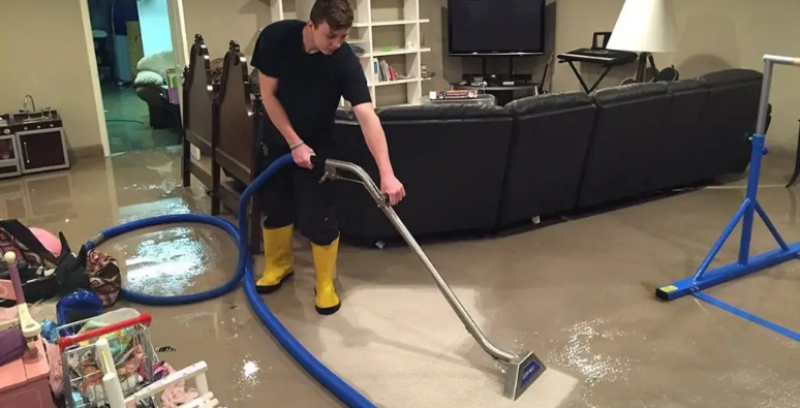Business
Effective Solutions for Sewage Water Removal, Leaky Faucets, and Garbage Disposal Leaks

Home plumbing problems can quickly turn from minor inconveniences to major headaches if not addressed promptly. Issues like sewage water removal, a leaky faucet, or a garbage disposal leaking can lead to water damage, unpleasant odors, and even health hazards if left unchecked. Knowing how to recognize the signs, understand the causes, and take proper action can save you both time and money.
Understanding Sewage Water Removal
What Is Sewage Water and Why It’s Dangerous
Sewage water, often referred to as “black water,” contains harmful bacteria, viruses, and contaminants from toilets and drains. Immediate sewage water removal is crucial because exposure can cause infections, respiratory problems, and property damage.
Standing sewage can also seep into flooring, walls, and furniture, leading to long-term moisture issues and mold growth. Proper removal involves not just pumping out the water but also disinfecting and drying the affected areas thoroughly.
Steps for Effective Sewage Water Removal
- Assess the Source – Determine whether the issue is from a backed-up sewer line or internal plumbing failure.
- Protect Yourself – Wear gloves, masks, and waterproof boots before approaching contaminated water.
- Remove Standing Water – Use a wet-dry vacuum or call professionals equipped for large-scale sewage water removal.
- Disinfect and Deodorize – Clean all surfaces using antimicrobial solutions to eliminate bacteria and odors.
- Dry Thoroughly – Use fans, dehumidifiers, and ventilation to prevent mold growth.
Preventing Future Sewage Backups
Regular maintenance, such as scheduling drain inspections and avoiding flushing non-degradable items, can prevent sewage blockages. Installing a backflow valve in your main sewer line is also an effective safeguard against future problems.
Fixing a Leaky Faucet Before It Wastes Water
A leaky faucet may seem like a small issue, but it can waste gallons of water every day, increasing your utility bill and promoting rust or mold buildup around sinks.
Common Causes of a Leaky Faucet
- Worn-out washers or O-rings
- Corroded valve seats
- Loose parts or mineral buildup
- High water pressure
How to Repair a Leaky Faucet
- Turn Off the Water Supply – Always shut off the main valve before repairs.
- Disassemble the Faucet – Use a wrench to remove the handle and inspect internal parts.
- Replace Damaged Components – Worn washers or cartridges are the usual culprits.
- Reassemble and Test – After replacing parts, turn the water back on to check for leaks.
If the leaky faucet persists, the problem might lie deeper in the plumbing system, in which case calling a professional plumber is the best move.
Preventing Faucet Leaks
- Clean aerators regularly to prevent mineral clogging.
- Avoid overtightening handles, which can wear out seals.
- Install water softeners in hard-water areas to reduce mineral damage.
Dealing with a Garbage Disposal Leaking Problem
A garbage disposal leaking can be both messy and frustrating, especially when it leads to puddles under the sink and foul smells. Identifying the leak’s location is key to fixing it quickly.
Common Leak Points
- Sink Flange: The top connection between the sink and the disposal can loosen or corrode.
- Dishwasher Connection: Leaks may occur where the dishwasher drain hose connects.
- Discharge Pipe: If the gasket or seal here wears out, water can seep out during operation.
- Cracks in the Disposal Unit: Old units may develop cracks in the body, requiring full replacement.
Steps to Fix a Garbage Disposal Leak
- Unplug the Unit and Inspect the Source – Always ensure safety before touching any components.
- Tighten or Replace Seals and Bolts – Most leaks stem from loose connections or worn gaskets.
- Check for Cracks – If the unit body is cracked, replacement is usually the only solution.
- Run Water to Test – Once repairs are complete, run water and the disposal to confirm it’s leak-free.
Tips for Preventing Leaks
- Avoid disposing of grease, coffee grounds, or fibrous materials.
- Regularly flush with cold water to clear debris.
- Schedule routine maintenance to inspect connections and seals.
Final Thoughts
Dealing with sewage water removal, a leaky faucet, or a garbage disposal leaking issue requires a proactive and informed approach. While small leaks and drips can sometimes be handled with DIY methods, larger problems like sewage backups or persistent leaks often demand professional attention.
By identifying warning signs early and maintaining your plumbing system, you can protect your home from water damage and ensure a healthier environment.
FAQs
1. How soon should I address sewage water in my home?
Immediately. Sewage water contains harmful contaminants, so sewage water removal should be performed as soon as possible to prevent health risks and property damage.
2. Can I fix a leaky faucet myself?
Yes, if it’s a simple washer or O-ring issue. However, if the leaky faucet persists after replacement, you may need professional plumbing assistance.
3. Why is my garbage disposal leaking from the bottom?
Leaks from the bottom often indicate a cracked housing or worn internal seals, meaning the garbage disposal leaking unit may need replacement.
4. How can I prevent sewage backups?
Regular drain cleaning, avoiding flushing wipes, and installing a backflow valve can reduce the chances of sewage backups.
5. What should I do after cleaning up sewage water?
Disinfect all affected surfaces, dry thoroughly, and monitor for mold growth. If odors persist, contact a restoration specialist for deep cleaning.
Source:
Click for the: Full Story
You might like













 Close Menu
Close Menu